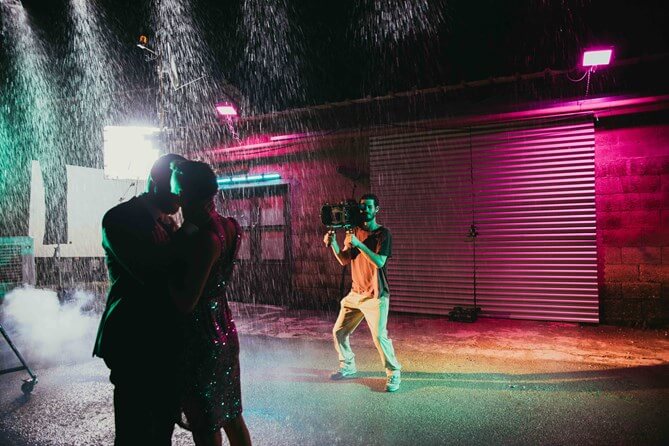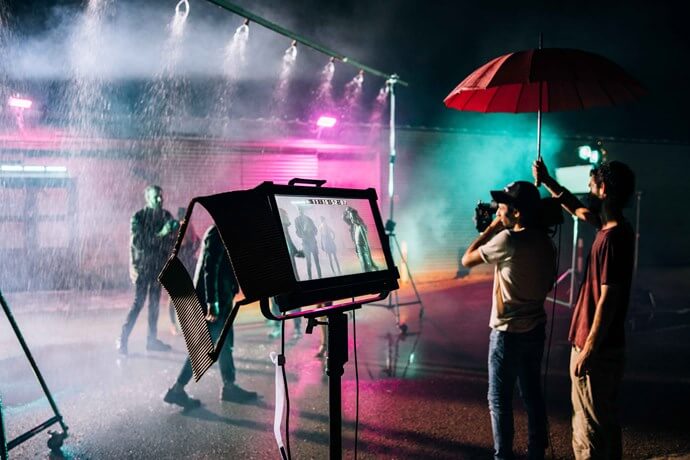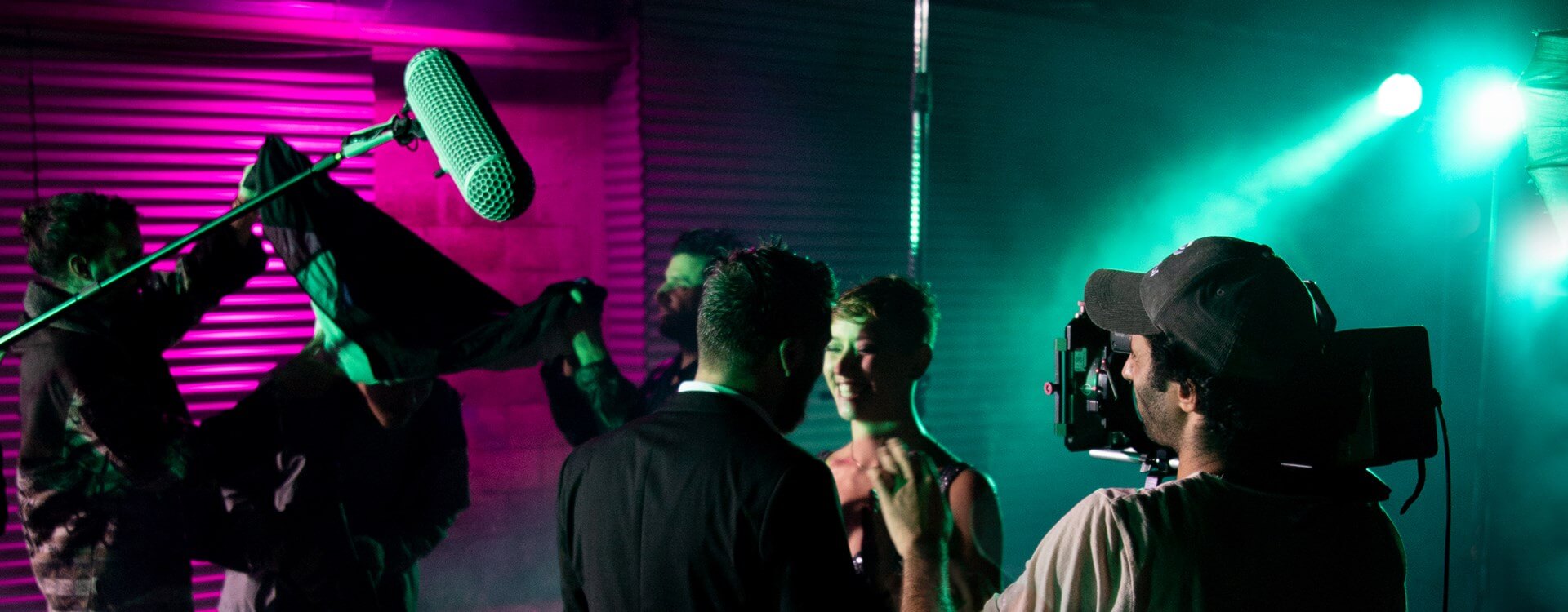Highlights
Table of Contents
Explore article topics
Shooting night scenes might feel like an enormous undertaking, but there’s no reason why you can’t do it. It might require a little planning, but it’s definitely doable. We’ve put together this guide to help you with your night videography, which will add some extra oomph to your output.
Camera and lenses
When it comes to shooting night-time scenes, it’s best to choose a high-sensitivity camera and use fast lenses. Cameras with high sensitivity include the Sony a7S III, the Nikon D850, or the Canon 1DX II. A “fast” lens is one with a large aperture, for example, ƒ/1.8 or ƒ/2.8. If you’re wondering, the term “fast” means that the aperture is sufficiently wide that you can use a fast shutter speed without compromising your exposure too much.
Between the sensitivity and the large aperture, this kit combination will be able to pick up every available flicker of light in a night scene. And you will want to make the most of that by using the largest aperture that you can get away with.

Using a large aperture creates a shallow depth-of-field. This will render lots of your scene out-of-focus. This is great for producing pretty bokeh, particularly in night light scenes, but not so good if you have multiple characters in a scene or if it involves lots of movement. Depending on what you’re shooting, it will be a balancing act between a very large aperture of, say, ƒ/2.2 and a very shallow depth-of-field, or a slightly smaller aperture, maybe ƒ/5.6, that will keep a bit more of your scene sharp. But be warned: with an aperture of ƒ/5.6, you might need to introduce some light into your scene to help capture it.
ISO
By increasing your ISO, you will give yourself a little leeway when it comes to your video camera aperture. A higher ISO increases your sensor’s sensitivity to light, so you can compensate for this with a slightly smaller aperture, or it will help you film a particularly dark night scene.
Of course, the flip-side of high ISO is noise or a grainy appearance to your video. Plenty of cameras can handle a reasonably high ISO without it looking too rough, but ideally, you need to get to know your own camera. The more you use it for night videography or to shoot in low-light situations, the better feel you will get for how high you can push the ISO before the graininess becomes unacceptable.
Shutter speed
When it comes to shutter speed, you are best sticking to one that will give your videos a natural feel. Slow-motion night-time scenes will require that you introduce some additional lighting, so you might want to avoid them. For 24 frames per second, use a shutter speed of 1/50 second. For a video shot at 30 frames per second, try a shutter speed of 1/60 second. These shutter speeds are equivalent to a 180º shutter angle, which is the standard for “natural-looking” footage. We have an article on shutter angle here, which will give you a deeper understanding of the term.
White balance
For the purposes of consistency, you are always best to set your white balance manually. However, there are other creative benefits to setting the white balance yourself, too.
By setting a white balance of between 5,500 and 7,000 K, you will be able to play on the orange tones of the light in your scene, bringing it warmth. If you have a fire-lit set, it will make it feel cozy, or it can intensify a blazing inferno. If you would prefer to emphasize the blue tones in a night scene, use a white balance around 2,000 K.
Look for the light
You might need to introduce a little artificial light to the scene to help you capture it accurately. But before doing that, look at what ambient light is available and use that to your advantage. Are there street lights casting light on your scene? Lights from house windows or shop fronts can provide just enough illumination for your benefit. There might be just enough ambient light to throw a good silhouette. It’s definitely worth making sure that you have one or two reflectors to hand, too. They can reflect ambient light back into your scene, which will be enough to illuminate your scene without overdoing it.
Keep your distance

When you are shooting with a large aperture, it can be a good idea to distance yourself and your subjects. The large aperture and its shallow depth of field will mean that your subject can very easily slip out of focus when you are too close. By stepping back a little, the plane of focus will be, relatively speaking, larger, which gives you more room for maneuver.
Get unlimited royalty-free 4K footage
Shoot in manual
It might feel tempting to let your camera do the heavy lifting and shoot with at least some of your settings on automatic. However, by going manual, you will afford yourself the highest possible degree of control over your filmmaking and increase the consistency of your footage. This is especially important when you are filming night light scenes. Your camera is always going to try to achieve the “best” possible exposure. When you actually want the scene to look dark, automatic settings will just result in over-exposure. Instead of deep, dark backgrounds with just-exposed faces and lovely bokeh, you will have blurred and grainy images where the shutter speed slowed down so much that nothing is sharp and the ISO is so high that everything is grainy. You are much better off taking control and going for manual use. Just like shooting a night scene, you won’t regret it!
Finally
Remember to take care of yourself and your cast and crew. Make sure that people don’t get too cold, or lost or feel in any way insecure or are unsafe. Night scenes are cool, but they don’t need to be cold!
Daniela is a writer and editor based in the UK. Since 2010 she has focused on the photography sector. In this time, she has written three books and contributed to many more, served as the editor for two websites, written thousands of articles for numerous publications, both in print and online and runs the Photocritic Photography School.
Share this article
Did you find this article useful?
Related Posts
- By Josh Edwards
- 13 MIN READ
Latest Posts
- 17 Apr
- By Daniela Bowker
- 7 MIN READ
- 15 Apr
- By Rebecca Helfenbaum
- 4 MIN READ
